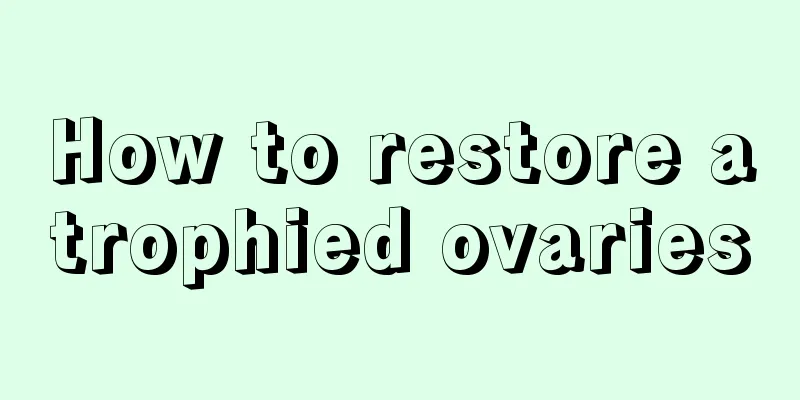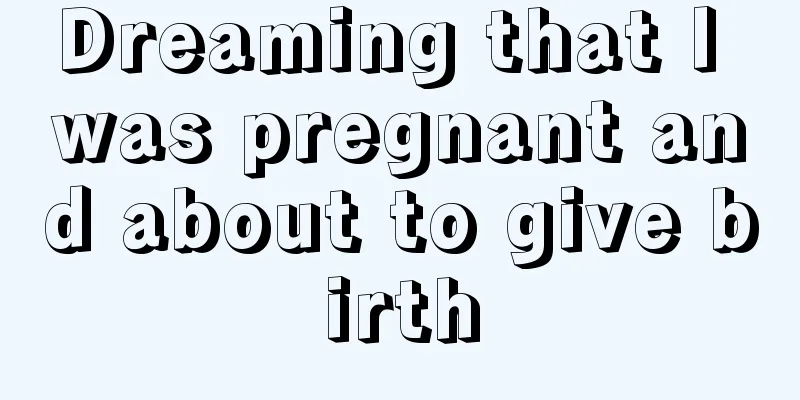Caesarean section for more than 2 months with recurrent lochia

|
After a woman gives birth to a baby, she will have postpartum lochia discharge. Many pregnant women experience persistent lochia after delivery, which is an abnormal condition. It may be caused by poor uterine repair or gynecological diseases. This requires immediate medical attention. So, what should I do if I still have postpartum lochia two months after my cesarean section? What should I do if I still have postpartum lochia two months after cesarean section? If a woman still has lochia two months after a caesarean section, she should go to the hospital for a comprehensive examination. It is important to determine the bleeding and infection in the uterine cavity. Once the cause is discovered, treatment should be sought immediately. There are many gynecological diseases that cause persistent lochia in postpartum women. Therefore, when pregnant women have persistent lochia, it is necessary to screen for gynecological diseases and actively treat the underlying diseases to solve the problem of persistent lochia after delivery. Many women who have just given birth have persistent lochia, which is all caused by poor uterine contractions. Therefore, when pregnant women's postpartum lochia continues to occur, they need to pay attention to the problem of uterine contractions. If the contraction frequency is slow, they should take medicine to increase uterine contractions, which can solve the problem of postpartum lochia. Pregnant women should also breastfeed their babies every day, which can not only increase the secretion of breast milk, but also promote the contraction of the uterus. The uterine contractions of women after giving birth are closely related to the discharge of postpartum lochia. The contraction of the uterus is improved, which can speed up the discharge of lochia, thereby allowing the lochia to be discharged earlier. What are the adverse effects of postpartum lochia? Adverse Effect 1 If the mother has lochia for too long, it can cause local and systemic infection, and even sepsis. Adverse Effect 2 If the postpartum lochia lasts too long, it will cause wound infection or incomplete wound repair. In severe cases, the uterus must be removed. Adverse Effect 3 If the lochia lasts too long, you should avoid late postpartum hemorrhage, which may even cause shock due to heavy bleeding and endanger the life of the pregnant woman. |
<<: What breast milk looks like under a microscope
>>: Pictures of spinal injections for cesarean section
Recommend
Will tct examination cause bleeding?
After some women have gynecological diseases, the...
Popular Science Book "Eat Less Oil, Eat Better Oil" (Wang Xingguo) Article Selection 25
6 Types of fatty acids Fatty acids are the basic ...
What are the benefits of drinking scented tea for women?
In our country, there is a special type of reproc...
What is the best hydration effect at the age of 21?
People are still relatively young at the age of 2...
What are the differences among the various types of milk?
I heard that yogurt is better than pure milk, is ...
Right ectopic pregnancy with preserved fallopian tube
In the case of an ectopic pregnancy, the fallopia...
What does a bad cervix mean?
Poor cervix is a common condition in our lives....
What are the benefits of eating avocado for women
I believe some people have heard of sugar apple. ...
What is the reason for the decrease of amniotic fluid in late pregnancy
If there is a decrease in amniotic fluid in the l...
Is brown discharge considered seeing red?
Pregnant women will be very scared when they sudd...
The impact of smoking and breastfeeding on children
Women who are breastfeeding should not smoke, and...
Confessions from a patient with depression: For whom is my heart closed and opened?
Editor's Note The sunny and cheerful singer C...
What fruits are good for patients with uterine fibroids after surgery?
After surgery, patients with uterine fibroids sho...
How long after a miscarriage can you eat cold food?
After a miscarriage, women feel that their diet h...
What to do if your belly is still big after cesarean section
Every woman wants to have a perfect figure, but a...









